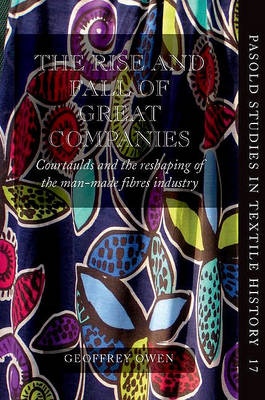Pasold Studies in Textile History
1 primary work
Book 17
This book is about a company which pioneered a major new industry, failed to build on that success, and ended up being taken over and broken up. By comparing this firm with its competitors in the same industry, the book sheds light on one of the hardest of all managerial challenges: what companies can do when their industry goes through a period of turbulence, forcing them to change direction, learn new skills, and perhaps abandon businesses on which they have relied
for many years.
Courtaulds was a British company which was once the world's leading producer of man-made fibres. It failed to adapt to the crisis in that industry that began in the mid-1970s, and lost ground to the point where, 25 years later, it could no longer sustain itself as an independent company. The crisis stemmed from the shift of textiles, clothing, and man-fibre production to low-wage countries, and above all to China.
The book looks in some detail at the other companies - European, American, and Japanese - which had a big commitment to man-made fibres in the earlier post-war decades and, like Courtaulds, faced difficult adjustment problems in the closing years of the 20th century. Why did some of them handle the crisis better than Courtaulds? In answering this question the book looks both at decisions taken by individual managers and at the national context in which they were operating. Institutional
differences between countries, notably in the role of shareholders and the financial markets, played an important role in determining which companies survived and which did not.
for many years.
Courtaulds was a British company which was once the world's leading producer of man-made fibres. It failed to adapt to the crisis in that industry that began in the mid-1970s, and lost ground to the point where, 25 years later, it could no longer sustain itself as an independent company. The crisis stemmed from the shift of textiles, clothing, and man-fibre production to low-wage countries, and above all to China.
The book looks in some detail at the other companies - European, American, and Japanese - which had a big commitment to man-made fibres in the earlier post-war decades and, like Courtaulds, faced difficult adjustment problems in the closing years of the 20th century. Why did some of them handle the crisis better than Courtaulds? In answering this question the book looks both at decisions taken by individual managers and at the national context in which they were operating. Institutional
differences between countries, notably in the role of shareholders and the financial markets, played an important role in determining which companies survived and which did not.
